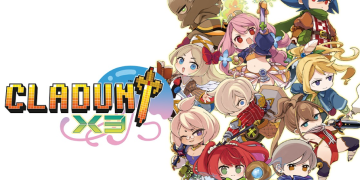Independent game developer Matt Greer recently shared an exciting achievement in both a blog post and a YouTube video. He managed to condense an entire game of Solitaire onto a single custom Nintendo e-Reader card. What might surprise many is that this card holds just two “dotstrips,” each carrying 2,192 bytes, making up a total of just over 4.3 kilobytes of data—a feat that truly pushes the boundaries of what’s possible with such limited space.
For those unfamiliar, the Nintendo e-Reader was an intriguing peripheral created for the Game Boy Advance. Launched in December 2001 in Japan and in September 2002 in the United States, it allowed players to scan special cards to load full games or add expansions to existing Game Boy Advance titles. With an impressive 8MB of built-in storage for the time, some titles, especially the NES ports, required as many as 10 cards though the system could support up to 12. However, for additional levels in games like Super Mario Advance 4, just one card sufficed.
In his blog post, Greer dives deep into the intricacies of developing this unique homebrew Solitaire game. It’s a testament to creativity within the severe constraints typical of Game Boy Advance games. While homebrew Game Boy Advance projects are niche in their own right, condensing an entire game onto a single e-Reader card elevates this project to an almost absurd level of niche gaming passion.
Greer’s blog also highlights how the e-Reader is versatile, supporting NES games, raw binaries, and Zilog Z80 binaries. The Z80 assembly, with its efficiency and low footprint, proved perfect for this project. One advantage of the Nintendo e-Reader is its API, allowing developers to perform numerous common tasks directly from the e-Reader, conserving even more space by eliminating redundant code.
Interestingly, the Z80 emulator used in the e-Reader isn’t entirely accurate, offering only a limited number of opcodes and registers. This presents unique challenges, as some tasks possible on a typical Z80 aren’t feasible within the constrained e-Reader environment. Yet, despite these hurdles, Greer successfully crafted a fully functional game of Solitaire that even includes customizable music within the 4,384-byte limit. It’s truly remarkable what he managed to achieve with just two dot strips on one custom card.
Sadly, the e-Reader enjoyed only a brief period of production, making it something of a forgotten artifact in gaming history. Despite its obscurity, projects like Greer’s remind us of the innovative spirit that continues to thrive within the gaming community. If you’re curious to learn more, his detailed blog and accompanying video offer a fascinating look into the technical wizardry involved in making this diminutive version of Solitaire a reality.











![[FREE Game] Ruffy and the Riverside Giveaway (PlayStation 5 – North America) [FREE Game] Ruffy and the Riverside Giveaway (PlayStation 5 – North America)](https://www.intergamerz.com/wp-content/uploads/2025/06/FREE-Game-Ruffy-and-the-Riverside-Giveaway-PlayStation-5-–-360x180.jpg)



































